How to Defeat the Squash Vine Borer & Squash Bugs: 13+ Tips
If I could get rid of one garden pest, I think it would be squash vine borers (right after the groundhog!). Those squash borer buggers decimated our zucchini, yellow summer squash, and even our pickling cucumbers last season.
We tried surgical attempts to rid the plants of the worms inside the stem, to no avail.
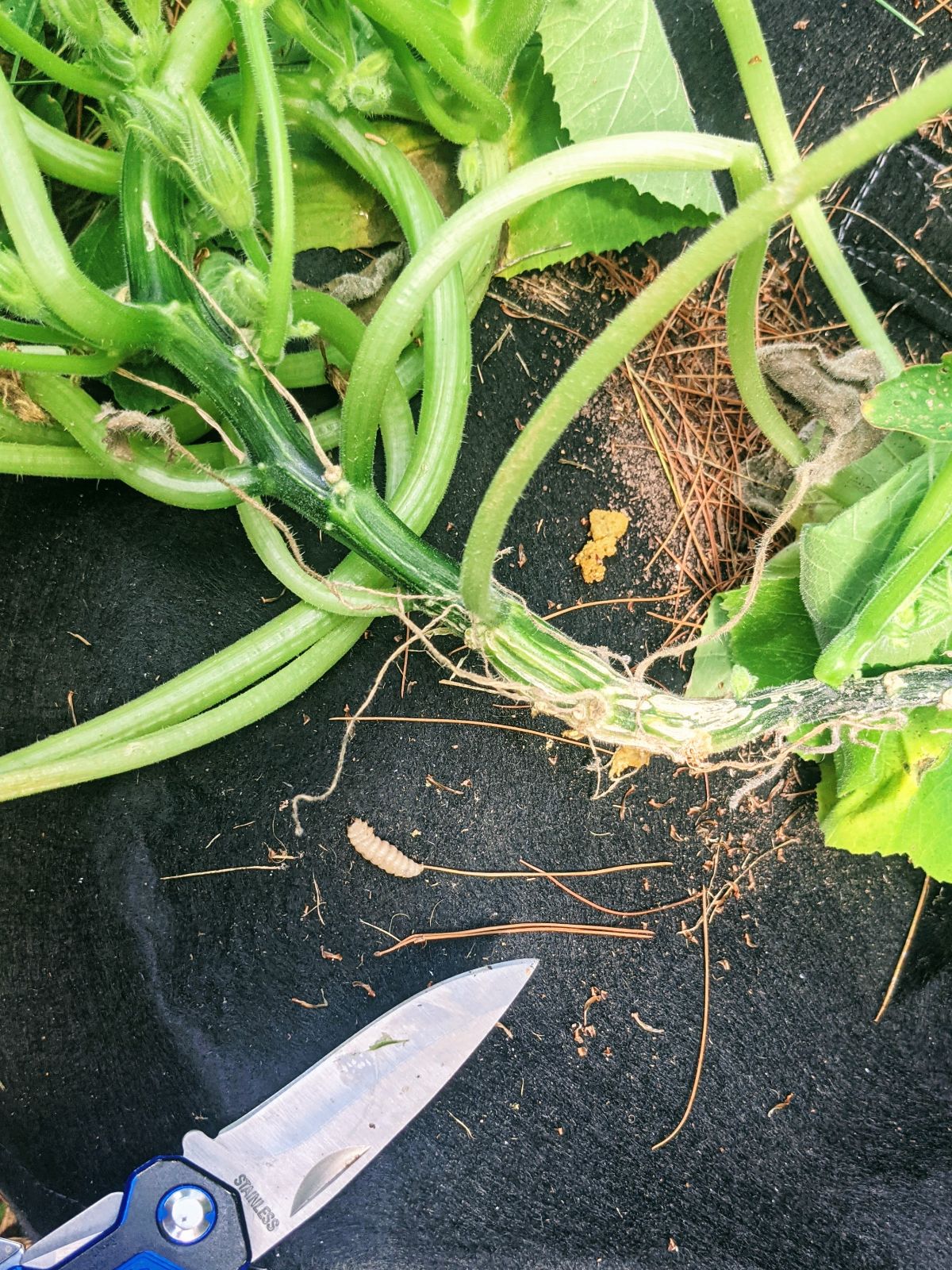
Next, on a whim, we tried topically applying colloidal silver in hopes it would heal and protect. Nope.
These attempts came amid fighting off pesky thieving squirrels, cabbage moths, aphids, and cucumber beetles, among others.
I finally decided I need to catalog the pests we see the most and start tracking what works best to defend our garden.
And, of course, I’m going to share my findings with all of you!
What Are the Signs of Vine Borer Infestation?
Often plants show vine borer signs that are easy to miss. Commonly, wilting plants that have already been watered may be a dead giveaway to a vine borer problem. The larvae get in the way of the plant’s vascular system, preventing water uptake.
“Frass” – sawdust looking insect excrement or refuse from boring – often appears along infested squash stems as another clue.
Finally, you may actually see the adult vine borers or juveniles on your plants. The horror!
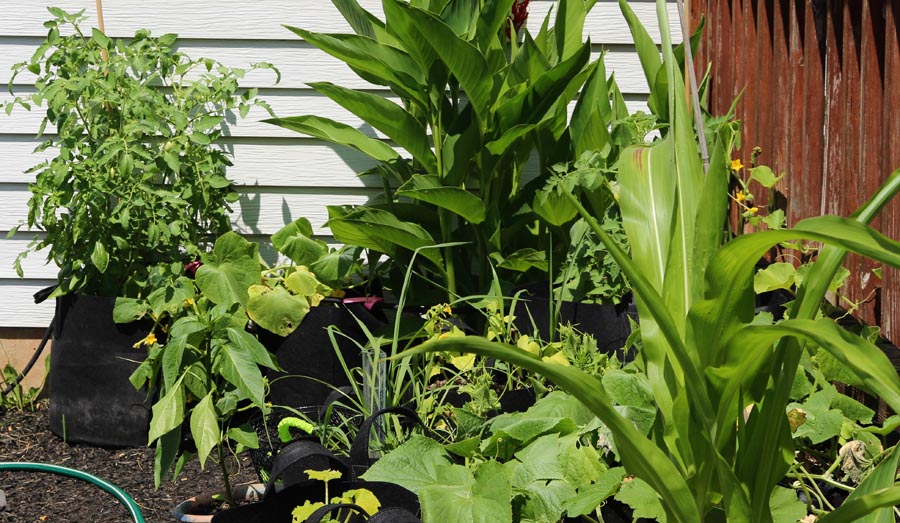
Do Any Companion Plants Help Deter Squash Vine Borer?
Radishes are said to deter squash borer pests when planted with zucchini, summer squash, and other plants affected by this insect.
(Resource: Companion Planting: Effects of Radishes on Squash Bugs)
This is great news, because our kids won’t eat them, so we might as well put the seeds to good use!
As another example, Nasturtiums may serve as a deterrent for squash bugs, particularly with summer squash.
The lovely Nasturtium flowers are believed to lure the squash pests away from the zucchini and squash, instead drawing them to itself.
So far, the information I’ve found on this is anecdotal, but I’m willing to test it and report back on our own experiences.
How to Get Rid of Squash Bugs
Anasa Tristis, aka: squash bugs, and Melittia cucurbitae, aka: vine borer / squash vine borer, are the most significant pumpkin and squash pests in our part of the world.
With enough of these intolerable insects, you can kiss your entire summer squash crops goodbye.
We had several zucchini, squash, and pickling cucumber plants that ALL fell prey to the squash vine borers and squash bugs in our 2020 garden.
Every year, history repeats itself! I eventually started covering my squash plants, but sometimes they still get in. 🙁
Getting rid of squash pests is on every gardener’s mind at some point. You can find lots of methods to try and I’ll share all those that I find. I need them, too!
Truthfully, though, the bigger focus should actually be how to prevent vine borers and squash bugs in the first place.
Removing Squash Bug Eggs from Leaves – Video!
Preventing Squash Pests
They say an ounce of prevention is worth a pound of cure. I’m sure it’s way more than that when we’re talking zucchini!
Here are some tips to help prevent squash bugs and vine borers in the garden.
- Reduce the population by removing squash vine borer eggs from the stems and squash bug eggs from the underside of leaves. For every batch of squash pest eggs you’re able to find and destroy, you save yourself countless attacks on your zucchini and squash plants.
- Wrap your squash and zucchini stems. Use ACE bandage, pantyhose, or aluminum foil to wrap the stems of the squash plants, preventing vine borers from coming in direct contact to lay their eggs. Wrap the stems with aluminum foils around the stalk and also bury the foil several inches into the ground.
- Try fine mesh netting covers. Use insect coverings to prevent infestation. Fine mesh netting covers can keep out vine borers, squash bugs, and other pests. Just remember to open it for the bees some of the time if your plants require pollination.
- Use floating row covers until flowering. Similarly, floating row covers offer significant protection from garden pests like the vine borer and squash bugs. Choose self-pollinating squash varieties or make sure to open the cover for pollination.
- Move the squash plants from year to year. Avoid planting squash in the same location each year. Move them to try to shake off the vine borers and squash bugs.
- Catch squash bugs with masking tape. Wrap the tape sticky side out on your finger and sneak up on them. Works like a charm!
- Proactively treat with Bt. Bacillus thuringiensis (Bt) is a bacterial insecticide that gardeners can spray or inject into squash stems. Bt works as a preventative treatment for squash vine borer larvae, which will absorb it when feeding after they hatch.
- Treat with food-grade diatomaceous earth. Diatomaceous earth (DE) dries out insects by absorbing their fats and oils. Bugs may die within two days. Side Note: I am a little on the fence as I haven’t researched diatomaceous earth extensively and would want to be 1,000% sure it is safe for my family. (Keep in mind you may need to reapply after rain.)
- Try pheromone traps or sticky yellow traps. A squash bug trap would be worth its weight in gold in my humble opinion. After the buggy season we had last year, I am truly tempted to try whatever I can that’s safe and potentially effective.
- Destroy the squash bug vine borer pupae when you find them. Get to know what they look like and keep a hand spade handy so you can squash the bug when you find them.
- Rely on delayed planting / succession planting. Squash bugs only reproduce one generation per year, so it’s very effective to plant fast-growing squash after mating season. Wait until early July to plant (Zone 6b) a new round of zucchini and summer squash.
- Grow different varieties of zucchini. Some kinds of squash are more susceptible to vine borers and squash bugs than others. Consider trying a new type as a creative approach to beating this pest.
- Try skipping a few years. If the vine borers are very bad, you may wish to take a few years off from growing squash. This can help to reset your garden ecosystem and then you can try again another year.
If you’re seeing the signs of squash bugs and vine borers, it may already be too late. Do your best but definitely take notes in your garden journal for next season.
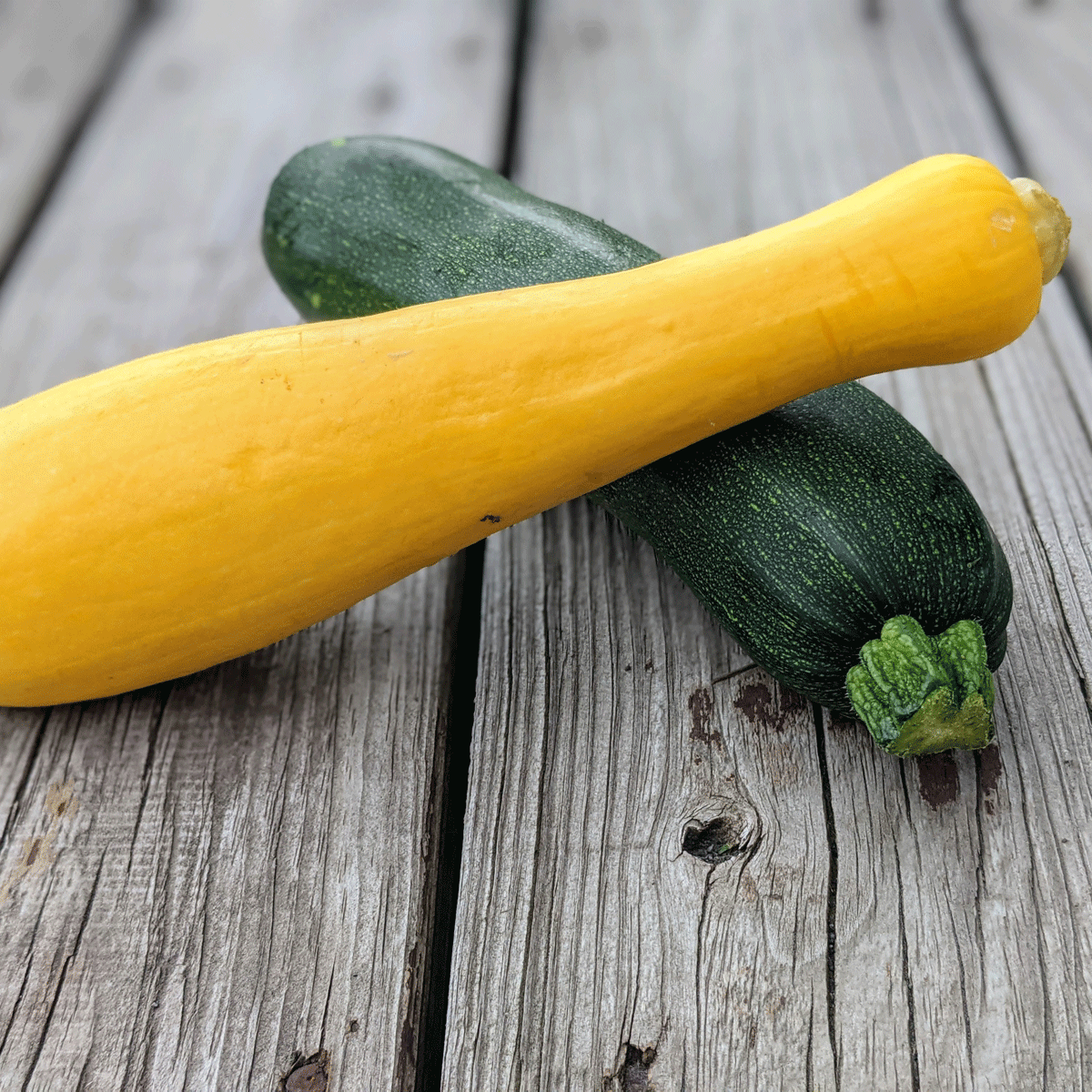
Squash Vine Borer Trap Crops
Trap crops can help to lure bad bugs away from your prized crops. These trap crops attract the garden pests so they will pass by your crops and go to the trap crop instead.
Blue Hubbard Squash
Blue Hubbard Squash shows promise as a trap crop for squash bugs and vine borers.
For best results, make sure Blue Hubbard seedlings are larger and more mature than zucchini, summer squash, and other cucurbits that you are trying to protect.
I am going to try Blue Hubbard squash as a trap crop plant this year. It’s going to get a later start than my other summer squash, but we’ll see how it goes.
Squash Bug Trap Crop Tips
In some studies, trap crops like Blue Hubbard Squash have largely spared the cash crops or preferred crops like yellow summer squash. I’m excited to try this at home!
Here are some tips I’ve discovered:
- Plant trap crop seedlings at least two weeks prior to main crops. This makes them more attractive to the pests, especially if they are already drawn to that variety of plant.
- Set the trap crops along the perimeter at least 3-8 feet from your main crops. This can be especially effective if you’re not sure where the squash borers are originating. You could also plant them at the end of the rows.
- Once the bad bugs all gather on the trap crop plants, kill them. Since they’re congregating together, you can more easily kill squash bugs with insecticide or sprayable soapy water.
- Sacrifice the trap crop plant to eliminate the pest population. If you notice significant breeding activity and young squash pests, you may need to destroy the whole trap crop to prevent all these becoming part of your garden’s ecosystem.
(Resource: https://ipm.missouri.edu/MEG/2017/3/Trap_cropping)
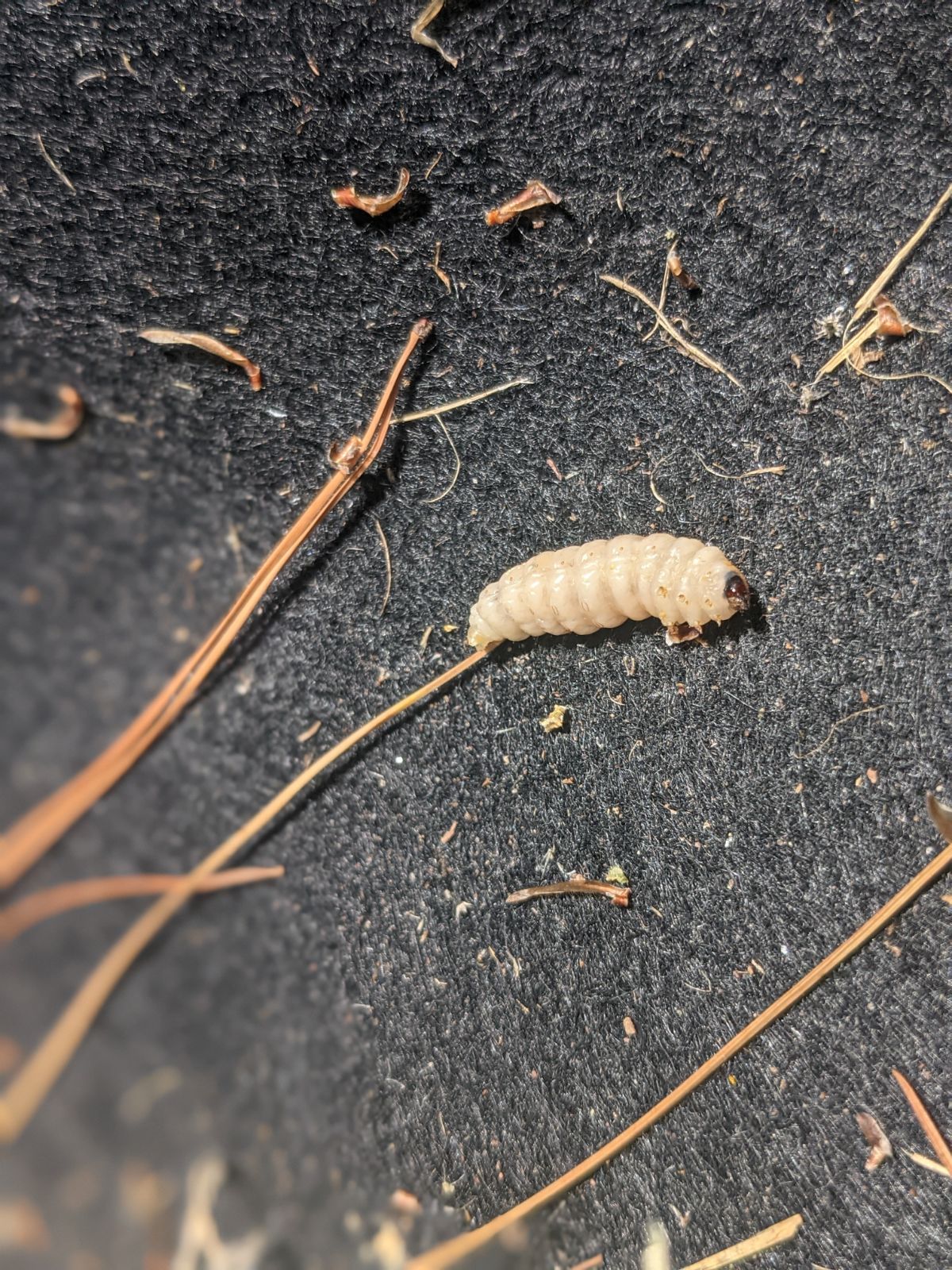
How to Kill Squash Bugs and Vine Borers
Once your plants are already infested with squash bugs and vine borers, you need to act quickly. Your plants may already be past the point of saving, but it’s absolutely worth a shot!
Try these as some potentially effective methods on how to kill squash bugs.
(Keep in mind nothing is truly full-proof and a combination of tactics may serve you well.)
- Killing squash bugs with dish soap – Mix a mild solution of Dawn dish soap and water in a spray bottle. Spray the squash bugs with the solution. Better yet if you can do this on the trap crops.
- Inviting squash bug predators – Encourage squash bug and vine borer predators to naturally protect your plants.
- Vigilance in scraping eggs off squash leaves – Monitor plants often, looking for vine borer and squash bug eggs on stems and leaves. Collect eggs and squash bug nymphs with sticky duct tape.
- “Performing surgery” on the plant – Use a thin wire to pierce the worms inside the vines. This is generally a last resort and it may already be too late by this point.
- Beneficial insects such baby mantis – Mantises eat many different bugs, including some beneficial insects. You may consider releasing or hatching a new mantis population, but bear in mind that it may impact your other good guys populations.
- Planting extra knowing that you may lose some – If you have space to spare, consider planting a garden for the pests. You may also find out of 10 plants, you may only lose a few if you’re lucky.
- Thinning leaves to allow sun at the base of the plant – Extra sun may help deter vine borers from laying eggs on your particular plants.
- Protecting plants with Neem Oil Spray – Spray neem oil on all plant surfaces to protect your crops. The plants absorb neem oil and rely on the vascular system to dispense the insecticide. When using neem oil squash bugs and vine borers ingest it when eating.
- Treating with Bt – You can spray Bacillus thuringiensis (Bt) bacteria treatment on plants facing a vine borer infestation to eliminate adults, nymphs, and eggs.
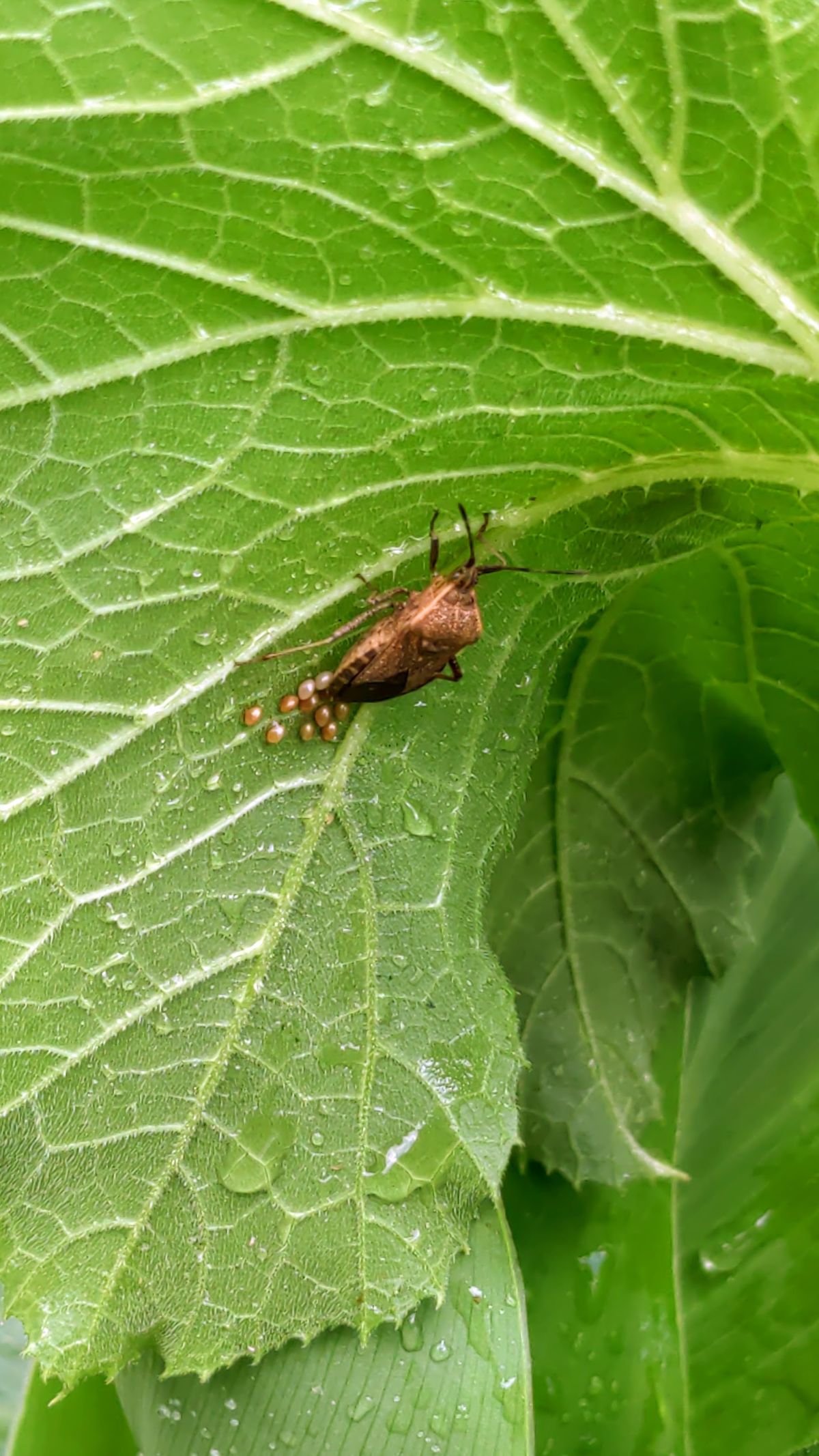
Final Thoughts: Squash Vine Borer Defenses
As gardeners, we work so hard to create beautiful outdoor spaces. Often our spaces boast added benefits like bountiful harvests we can enjoy with our families.
The squash vine borer is a formidable foe, and it may take numerous efforts to truly gain the upper hand. Be vigilant and work hard to establish a garden free from the dreaded squash vine borers, or at least one where you can coexist.
01.09.22 – Updated to add photo of tape removing squash bug eggs from the plant.
02.06.23 – Updated to add video and improved spacing. Added more photos.

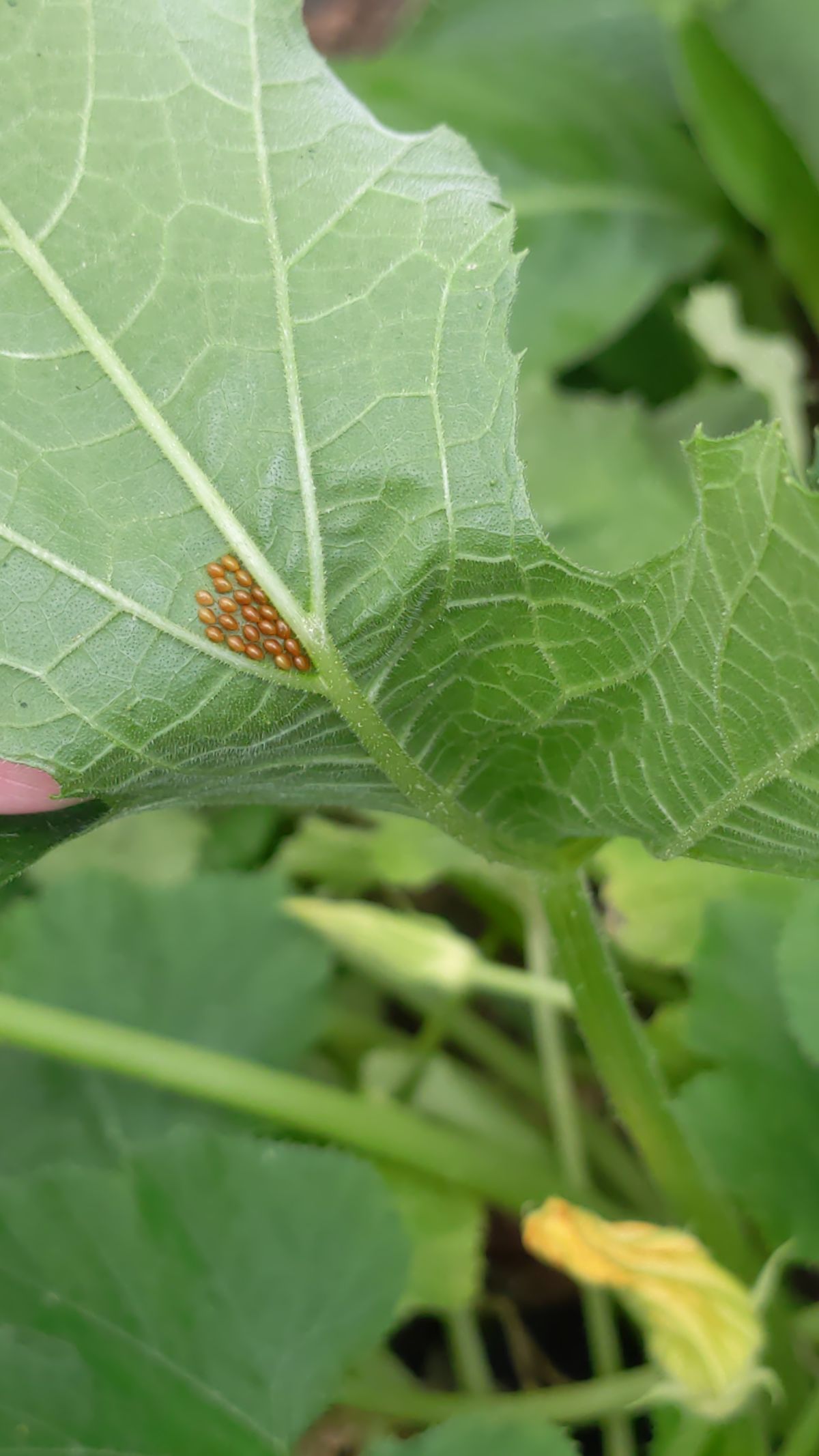
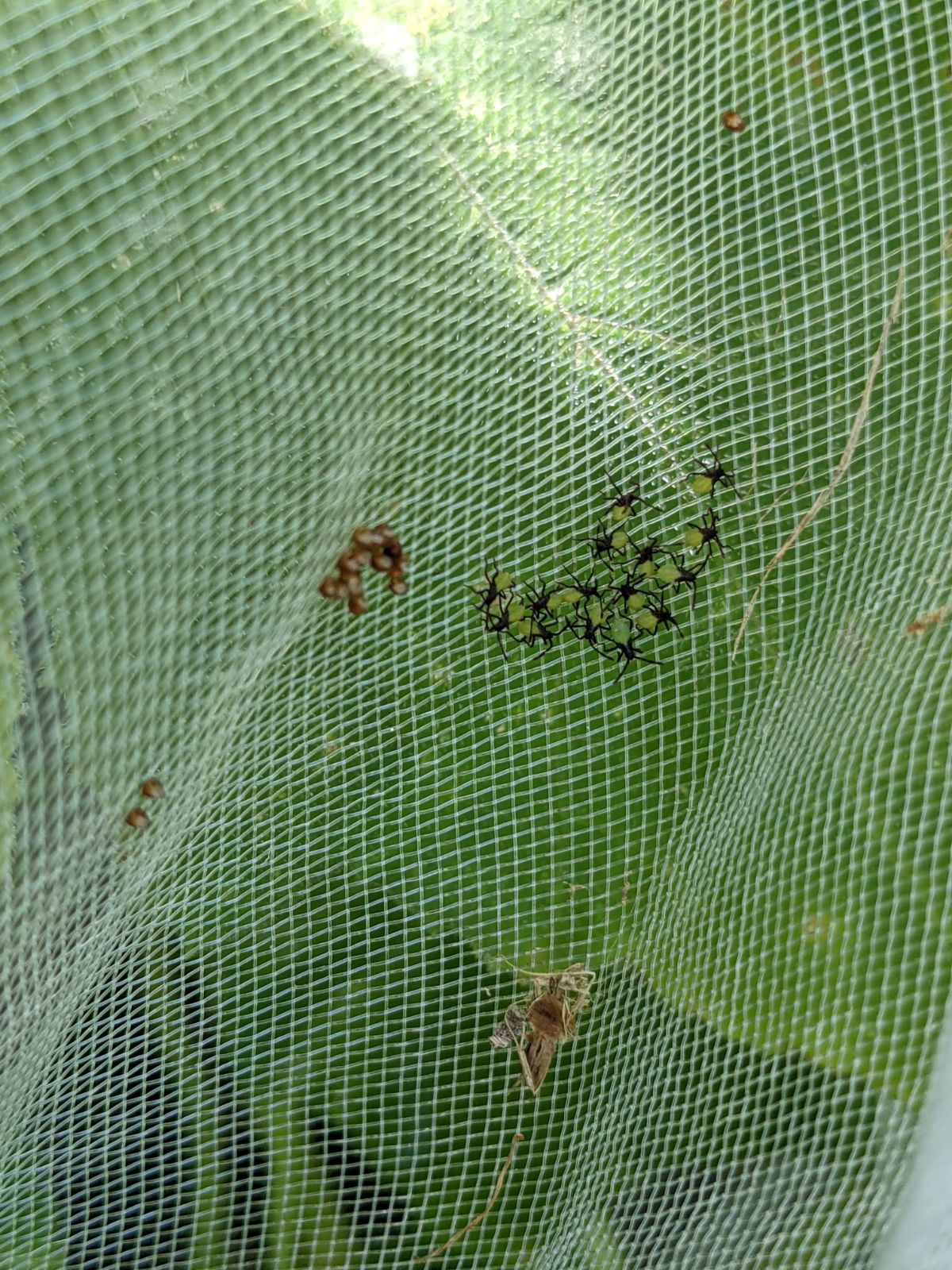
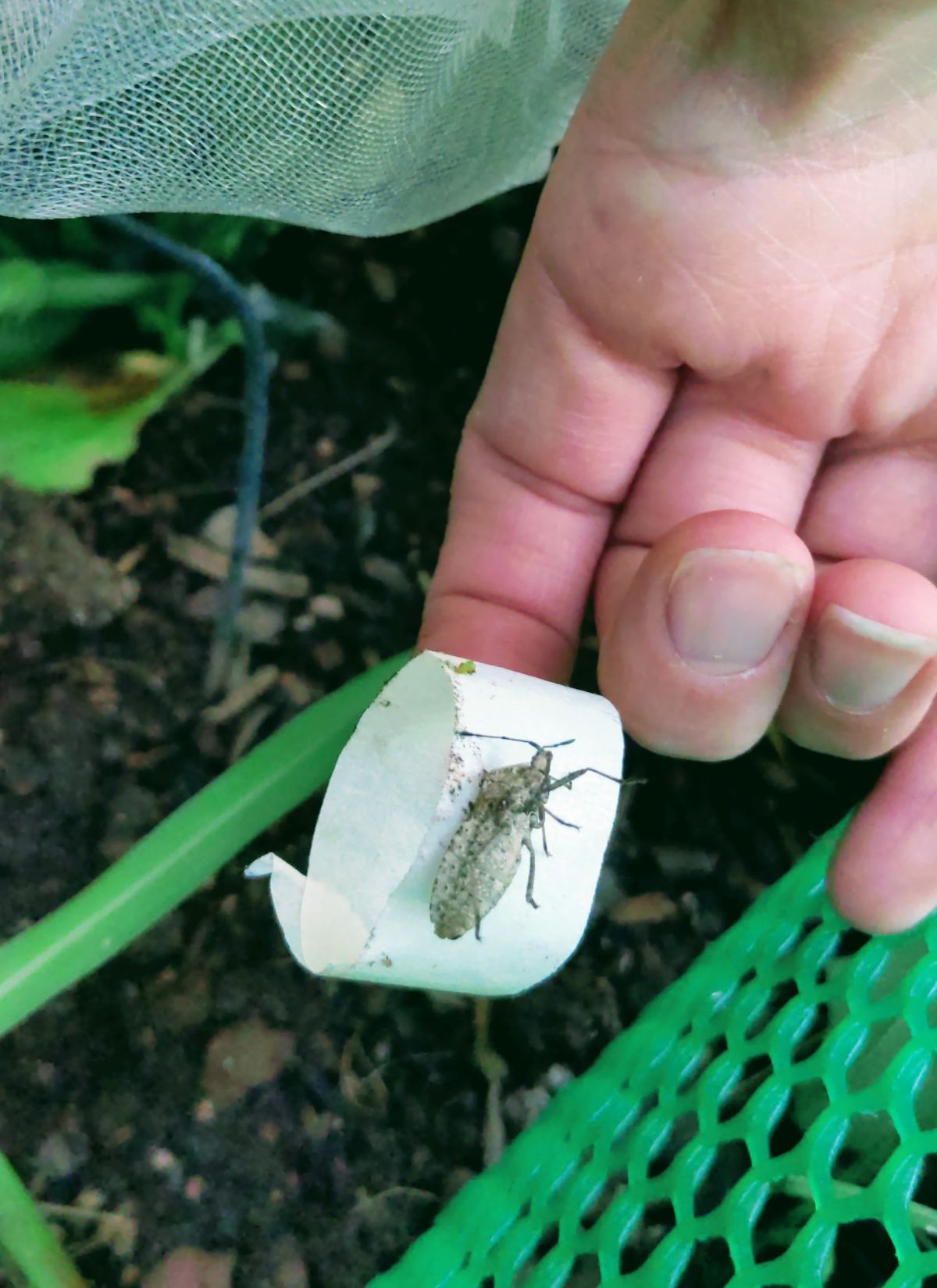
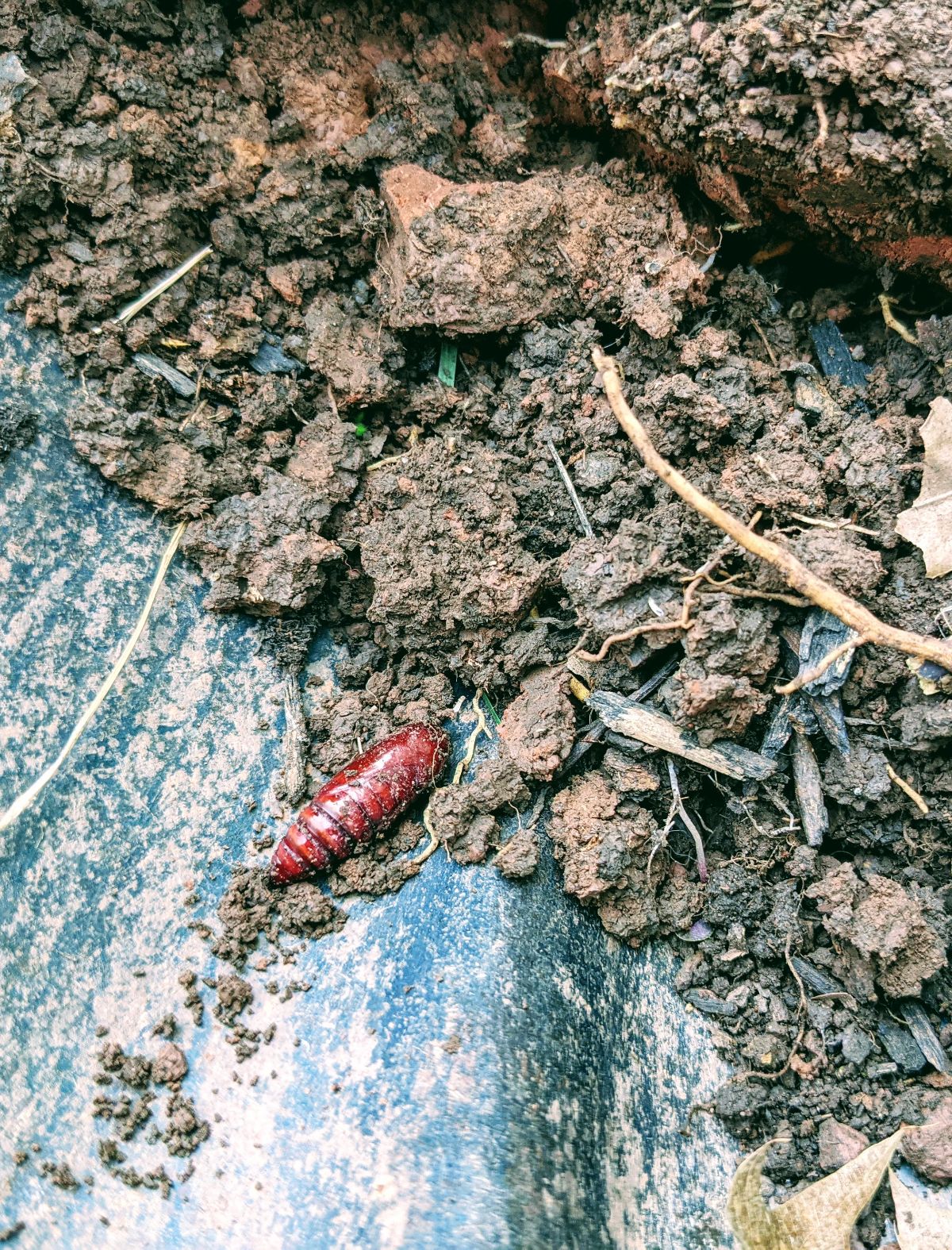
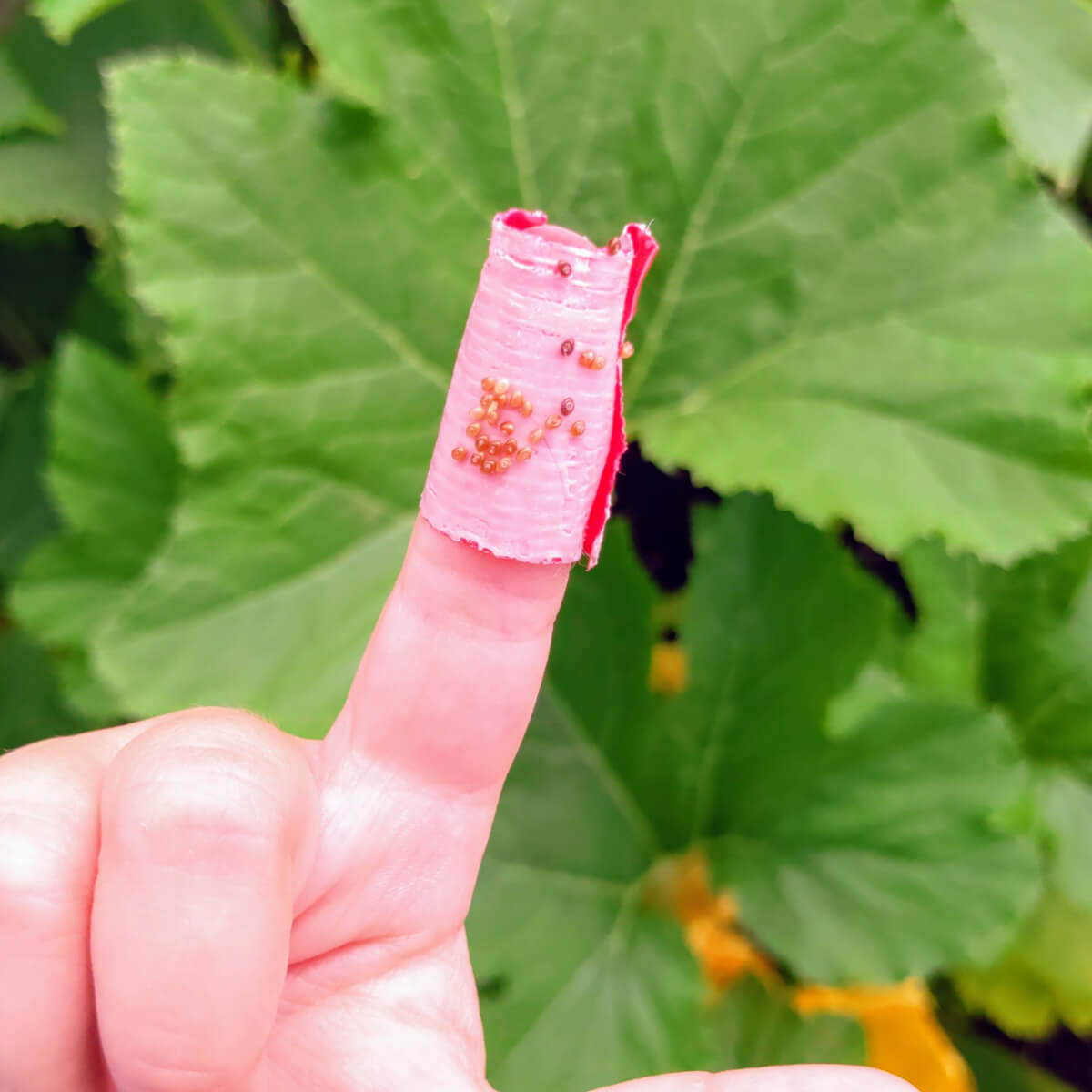
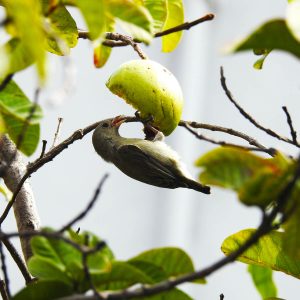



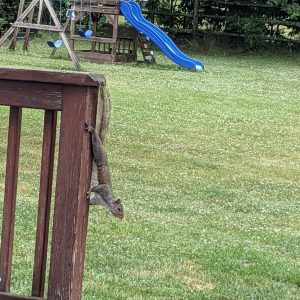

This year I planted winter rye in my raised beds. After I cut it down early in the year it grew right back
I ended up pulling it up and leaving it on the beds. I left it on the beds to die and am topping it off with compost when I need to plant. After reading lots of information on killing vine borers I realized that I might have disrupted the vine borers by exposing the grubs. I can only hope! I plan on following the method on You tube of Humble ServantHomestead. “Going to war with the vine borer”. He seems to have defeated the borer.
Hi Nancy! Thanks so much for stopping by and for the insightful information you’ve shared. I am literally at war with the vine borer year after year and thinking of row covers, so I am really grateful for your recommendations. I’d love to hear how it goes with your winter rye – I’ve personally dug up and destroyed a few vine borer pupae when I’ve seen them. Hopefully the birds will find and eat some that get churned up, too. I will have to look up the Humble Servant Homestead channel and get the scoop on how to defeat this awful garden pest! Thanks again and feel free to come back and update us if you think of it! Happy Gardening!
I battle borers every year, and like you I think they are on the top of my list of garden pests. One other thing I thought might work, but have not actually tried yet, is coating the stems with tanglefoot. Tanglefoot is a super sticky insect barrier that we use here in NC to protect our trees from canker worms whose larva crawl up the trunks in late winter. The larva get trapped in the barrier and can’t make it up the tree. I thought that coating the stem might have the same effect for borer larva. It lasts a long time on the trees so I think you’d get a full growing season out of it. We also use it to prevent ants from getting on the hummingbird feeders.
Hi Dave! Great to hear from you – thanks so much for letting us know about Tanglefoot – it sounds like a great solution to try for vine borers. The theory is sound and logical – would love to hear back if you have any results one way or the other. I will try to look into it myself as well. BTW – I love NC and wish you so much success with your garden!